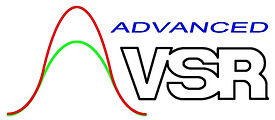
It is hard to find a milling machine worth anything these days, that does not have a brushless motor in its spindle. Brushless motor technology has also revolutionized other industries, from electric cars and trains to hand power tools.
We are the only builder of vibratory stress relief equipment in North America that uses brushless motors, which we use exclusively. Why use anything else ?
Learn more on our Equipment Comparison page.


WE INVENTED THE VSR PROCESS
Thermal Stress Relief (TSR) / Post-Weld-Heat-Treating (PWHT) Risks & Limitations
(Dr. Adams is also the coauthor of two papers that have been presented to engineering societies [ASME and ASM] on vibratory stress relief, which can be found in the our Technical Library.) A list of HSLA steels effected by PWHT can be seen here.
Although PWHT of most commonly used alloys, such as the various forms of mild steel, is effective, two broad categories of steel alloys run the risk of physical property loss, crack initiation, are not recommended outside the temperature range of -50 to 800 F / -46 to 426 C, suffer reduced abrasion resistance, or can undergo unwanted phase transformations (e.g. sigma-phase in stainless alloys), if thermally stress relieved.
These include:
- Numerous grades of low carbon, high strength alloys, including T-1, ASTM 514 and HY80
- Austenitic stainless alloys, which includes 300 series stainless steels
In addition, welded Ti-6Al-4V titanium alloy has been shown to suffer reduced fatigue life, if PWHT processed. In the work, Assessment of Structural Integrity of Titanium Weldments for U.S. Navy Applications*, Mohr reports that:
"The no PWHT specimens performed on average better in fatigue than the PWHT specimens, running about 50% longer under the same loading."
* This work can be found in our VSR Technical Library.
Such negative side effects can be avoided by using an alternative form of stress relieving, such as vibratory stress relief.
The risk of hydrogen embrittlement of welded T-1 that had undergone thermal stress relief was discovered by Dr. C. Mel Adams, an MIT metallurgist and co-founder of the Welding Research Department at MIT. Dr. Adams also served as the expert witness in the legal proceedings involving such structures that had suffered cracking and structural failure. Although the steel manufacturer was eventually acquitted, the engineering community worldwide took note of these events: Steel plate specification guides, such as that of Arcelor Mittal, have referenced footnotes attached to the specifications of numerous low-carbon, high-strength steel alloys, bearing warnings of the risks to their physical properties, if thermally stress relieved.
For a list of the low-carbon, high-strength steels that can suffer materials degradation, press the button below.
Example 1: This 40" X 98" X 60 foot long, 43 ton curved beam bridge member made of ASTM 710 was out of dimensional spec, as welded, so heat-straightening was used in an effort to bring it within required shape. This caused the part to become dimensionally unstable: It would change shape outside dimensional tolerances, if handled, such as being turned up-side-down. Further heat-straightening only made the situation worse.
After VSR Treatment, the curved beam stayed in one shape, although some minor correction was needed to bring it within dimensional spec. All requirements continued to be met throughout a trail / test assembly, disassembly, transport and final assembly in Western New York.

Example 2: 177 ton storm surge gates for the City of New Orleans were fabricated in Norfolk, VA. Vibratory stress relief was done soon after fabrication. Stress relieving was done to both enhance the general mechanical integrity, plus assure good dimensional stability.
When being installed, little or no fit-up work was required, despite the long cantilever design: The gates are held in place by only an upper and lower hinge "pin", embedded in ASTM 104 castings.
Inset shows VSR Vibrator, oriented with shaft vertical. Vibrator was placed near ladder in larger view. Four VSR Treatments were needed to stabilize these massive structures, using different vibrator locations and orientations.



Example: This 21 foot / 7 m long 304 stainless steel weldment, a cantilever beam, one of several, was VSR Processed in less than two hours.
Isolation cushions were placed on timbers, so as to gain floor clearance of flanges in right foreground, where also the accelerometer is clamped.
Vibrator can be seen aligned with length of workpiece, the ideal orientation.
Austenitic stainless steels are only marginally stress relieved, if at all, at temperatures below the ranges of 1600 - 1800 F / 870 - 980 C. If subjected to temperatures above 1100 - 1200 F / 590 - 650 C, and then cooled without going to higher temperatures and then quenching, a phase transformation to what is called the Sigma-phase can, and often, occurs. This explains why larger, complex austenitic stainless steel weldments are seldom PWHT processed, but they can be stress relieved with an effective VSR Procedure.